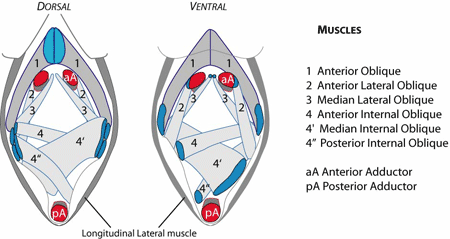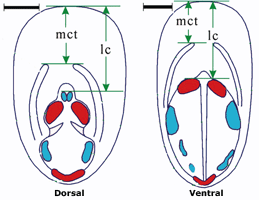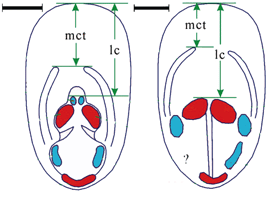 |
|
||||||
|
Genus Sinolingularia Peng & Shi, 2008 |
| [Type-species = L. huananensis] - see figure below that belongs to the diagnoses of the species.
Etymology. The new generic name refers tothe south Chinese (sino) fossils' linguliformshape and their close relationship to Lingularia Biernat & Emig, 1993. |
Shell elongate-oval, withrounded umbo, subparallel lateral margins,and weakly biconvex. Diagnosis from Peng & Shi (2008). |
| Lower Triassic-Carboniferous.
Occurrences: Lower Triassic: South China; Siberia, Russia. Carboniferous: Carluke, Lanarkshire, Scotland. |
|
|
|
The references of this page are:
|
|
Etymology: ‘Huanan’ (meaning South China) refers to the occurrence of the new species in Chinese phonetic writing.
Antero-lateral muscle scars in dorsal valve lacrymiform, separated anteriorly and connected posteriorly, closely located near central muscle scars. Etymology: Named in honour of Pr. Hongfu Yin.
Antero-lateral muscle scars in dorsal valve teardrop-shaped, subparallel and completely separated but closely positioned to each other and to central muscle scars.
|
|
|



